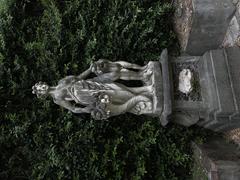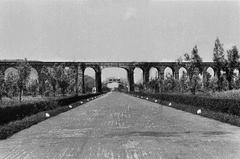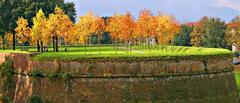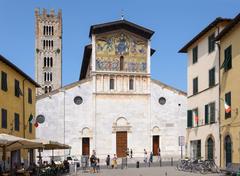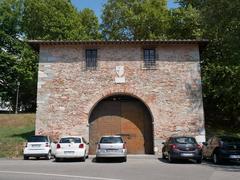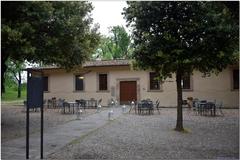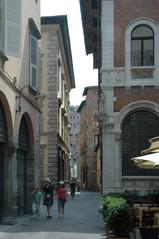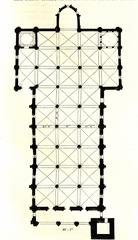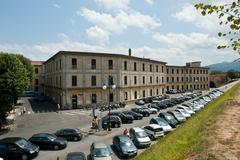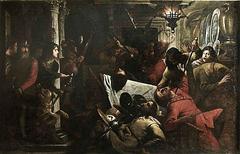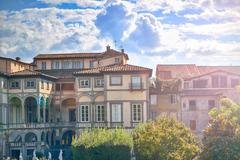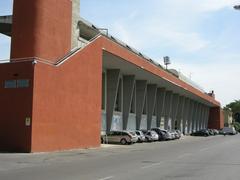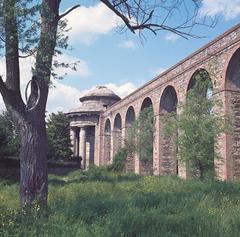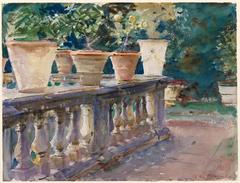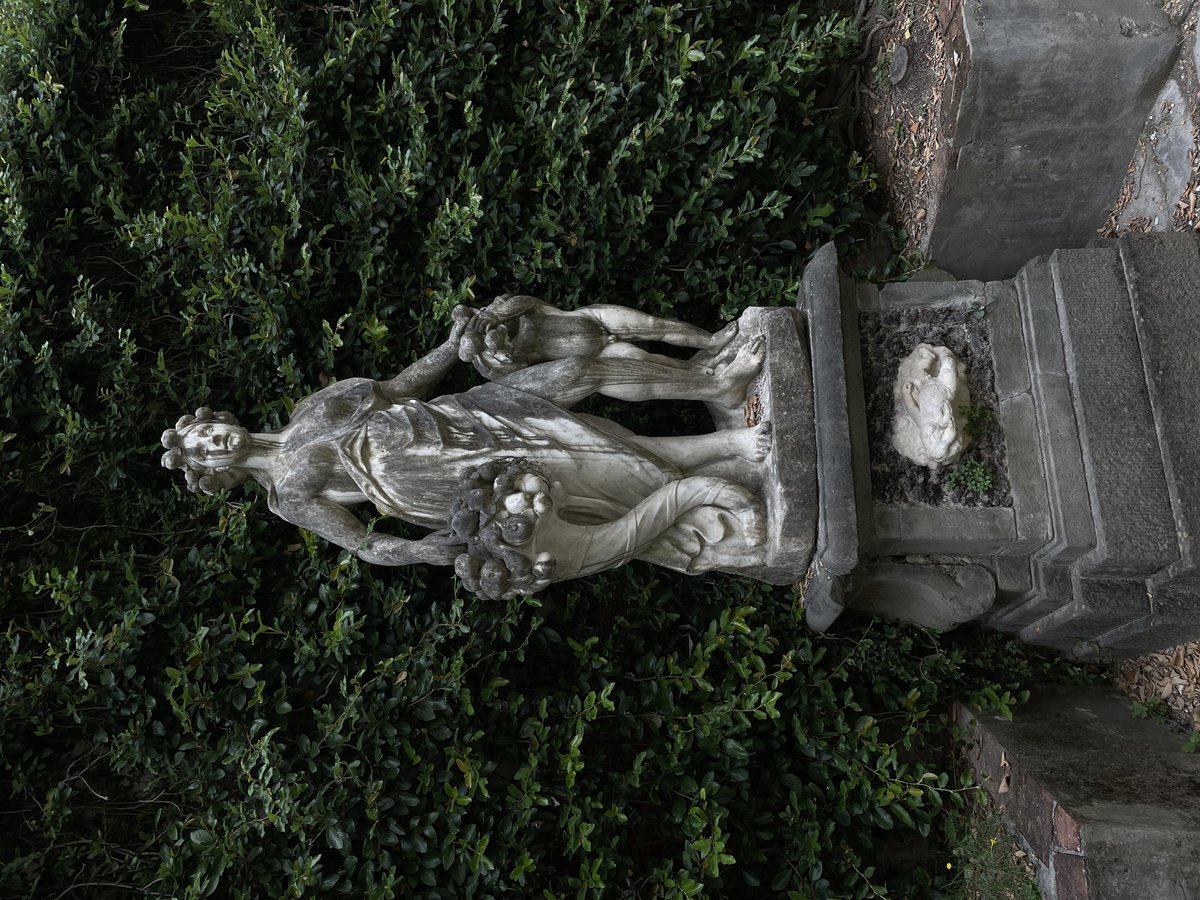
Visiting Museo Nazionale di Palazzo Mansi: Hours, Tickets, and Tips
Date: 19/07/2024
Introduction
Welcome to the comprehensive guide to visiting the Museo Nazionale di Palazzo Mansi, a cultural gem located in the historic heart of Lucca, Italy. This guide will take you on a journey through the rich history, artistic treasures, and practical details needed to make the most out of your visit. Founded in a late 16th-century palazzo originally owned by the influential Mansi family, the museum today stands as a testament to Lucca’s Renaissance and Baroque architectural grandeur. Whether you’re an art enthusiast drawn to works by masters like Titian and Tintoretto, or a history buff interested in the opulent lifestyle of Italian aristocracy, the Museo Nazionale di Palazzo Mansi offers an immersive experience that spans centuries. In this guide, we’ll provide essential visitor information including ticket prices, visiting hours, and travel tips, ensuring you have all you need for a memorable visit. Plan your journey through history and art, and discover why this museum is a must-visit destination in Lucca.
Table of Contents
- Introduction
- History of Museo Nazionale di Palazzo Mansi
- Collections and Exhibitions
- Visitor Information
- Restoration and Preservation Efforts
- Significance in Lucca’s Cultural Landscape
- Notable Artworks and Artifacts
- Educational and Cultural Programs
- FAQ Section
- Future Prospects
- Conclusion
History of Museo Nazionale di Palazzo Mansi
Origins and Early History
The Museo Nazionale di Palazzo Mansi, located in Lucca, Italy, is housed in a historic building that dates back to the late 16th century. The Palazzo Mansi was originally constructed by the Mansi family, a prominent and wealthy family in Lucca, who were influential in the city’s social and economic life. The construction of the palazzo began in 1599 and was completed in the early 17th century. The Mansi family used the palazzo as their residence, and it remained in their possession for several centuries.
Architectural Evolution
The architectural style of Palazzo Mansi reflects the transition from Renaissance to Baroque, characterized by its grandiose and ornate design. The building underwent several modifications and expansions over the years, particularly in the 17th and 18th centuries. These changes were often driven by the family’s desire to showcase their wealth and status. The interior of the palazzo is adorned with lavish decorations, including frescoes, stuccoes, and tapestries, which were added during these periods of renovation.
Transition to a National Museum
In the 19th century, the Mansi family faced financial difficulties, leading to the sale of the palazzo. In 1977, the Italian government acquired the building, and it was subsequently transformed into a national museum. The Museo Nazionale di Palazzo Mansi officially opened to the public in 1979. The museum’s establishment was part of a broader effort to preserve and promote Italy’s cultural heritage.
Collections and Exhibitions
The Museo Nazionale di Palazzo Mansi is renowned for its extensive collection of art and historical artifacts. The museum’s collection includes paintings, sculptures, textiles, and decorative arts, spanning several centuries. One of the highlights of the museum is its collection of 17th and 18th-century tapestries, which are displayed in the original rooms of the palazzo. These tapestries were commissioned by the Mansi family and are considered some of the finest examples of their kind.
The museum also houses an impressive collection of paintings, including works by Italian and European masters such as Titian, Tintoretto, and Veronese. The paintings are displayed in the opulent rooms of the palazzo, providing visitors with a glimpse into the luxurious lifestyle of the Mansi family. In addition to its permanent collection, the museum hosts temporary exhibitions and cultural events, further enriching the visitor experience.
Visitor Information
Visiting Hours
The Museo Nazionale di Palazzo Mansi is open to visitors from Tuesday to Sunday, from 10:00 AM to 6:00 PM. The museum is closed on Mondays and certain public holidays. It’s always a good idea to check the official website for any changes in opening hours before planning your visit.
Tickets and Admission
Tickets for the Museo Nazionale di Palazzo Mansi can be purchased at the entrance or online through the official website. General admission is €7.00, while reduced tickets for seniors and students are available for €4.00. Children under 18 and residents of Lucca may enter for free. Special rates are also available for group visits and guided tours.
Travel Tips
- How to Get There - The museum is located in the historic center of Lucca, easily accessible by foot or public transportation. The nearest bus stop is just a short walk away.
- Nearby Attractions - After visiting the museum, explore other nearby historical sites such as the Lucca Cathedral, the Guinigi Tower, and the Piazza dell’Anfiteatro. These attractions provide a deeper insight into the rich cultural heritage of Lucca.
- Accessibility - The museum is committed to providing access to all visitors. There are ramps and elevators available for those with mobility issues. It’s recommended to contact the museum in advance for any specific accessibility needs.
Restoration and Preservation Efforts
Since its establishment as a national museum, Palazzo Mansi has undergone several restoration projects to preserve its architectural and artistic heritage. These efforts have been crucial in maintaining the integrity of the building and its collections. The restoration work has included the conservation of frescoes, tapestries, and other decorative elements, as well as structural repairs to the building itself.
One notable restoration project was the conservation of the palazzo’s grand staircase, which features intricate stucco work and frescoes. This project was completed in the early 2000s and was part of a broader initiative to enhance the museum’s accessibility and visitor experience. The restoration efforts have been supported by both public and private funding, reflecting the importance of preserving this cultural landmark.
Significance in Lucca’s Cultural Landscape
The Museo Nazionale di Palazzo Mansi holds a significant place in Lucca’s cultural landscape. It serves as a testament to the city’s rich history and artistic heritage. The museum not only preserves the legacy of the Mansi family but also provides a window into the broader cultural and social history of Lucca. Through its collections and exhibitions, the museum offers visitors an opportunity to explore the artistic achievements of the past and gain a deeper understanding of the city’s cultural evolution.
The museum’s role extends beyond preservation and exhibition; it also plays an active part in the cultural life of Lucca. By hosting educational programs, workshops, and cultural events, the Museo Nazionale di Palazzo Mansi engages with the local community and visitors from around the world. This engagement helps to foster an appreciation for the arts and promotes the continued relevance of the museum in contemporary society.
Notable Artworks and Artifacts
Among the notable artworks housed in the Museo Nazionale di Palazzo Mansi is the “Portrait of a Lady” by Titian, a masterpiece of Renaissance portraiture. The museum’s collection also includes works by other renowned artists such as Jacopo Tintoretto and Paolo Veronese. These paintings are displayed in the context of the palazzo’s historic interiors, allowing visitors to experience the art in a setting that reflects its original context.
In addition to its paintings, the museum’s collection of textiles and tapestries is particularly noteworthy. The tapestries, which were commissioned by the Mansi family, depict scenes from classical mythology and history. These works are not only significant for their artistic quality but also for their historical value, as they provide insight into the tastes and interests of the Mansi family and the broader cultural trends of the time.
Educational and Cultural Programs
The Museo Nazionale di Palazzo Mansi offers a range of educational and cultural programs designed to engage visitors of all ages. These programs include guided tours, workshops, and lectures that explore various aspects of the museum’s collections and the history of Palazzo Mansi. The museum also collaborates with schools and universities to provide educational resources and opportunities for students to learn about art and history.
One of the museum’s key initiatives is its outreach program, which aims to make the museum’s collections and resources accessible to a wider audience. This program includes partnerships with local community organizations and efforts to provide free or reduced admission to underserved groups. Through these initiatives, the Museo Nazionale di Palazzo Mansi seeks to promote inclusivity and ensure that everyone has the opportunity to experience and appreciate its cultural treasures.
FAQ Section
Q - What are the visiting hours of Museo Nazionale di Palazzo Mansi?
A - The museum is open from Tuesday to Sunday, 10:00 AM to 6:00 PM. It is closed on Mondays and certain public holidays.
Q - How much do tickets cost for Museo Nazionale di Palazzo Mansi?
A - General admission is €7.00. Reduced tickets for seniors and students are available for €4.00. Children under 18 and residents of Lucca can enter for free.
Q - How can I get to the museum?
A - The museum is located in the historic center of Lucca, easily accessible by foot or public transportation. The nearest bus stop is a short walk away.
Q - Is the museum accessible for visitors with disabilities?
A - Yes, the museum is accessible and offers ramps and elevators. It’s recommended to contact the museum in advance for specific accessibility needs.
Future Prospects
Looking ahead, the Museo Nazionale di Palazzo Mansi continues to evolve and adapt to the changing needs of its visitors. The museum is committed to enhancing its collections and exhibitions, as well as expanding its educational and cultural programs. Future plans include the development of new digital resources and interactive exhibits, which will provide visitors with innovative ways to engage with the museum’s collections.
The museum also aims to strengthen its connections with the local community and international audiences. By fostering partnerships with other cultural institutions and participating in global networks, the Museo Nazionale di Palazzo Mansi seeks to enhance its visibility and impact. These efforts will ensure that the museum remains a vibrant and dynamic cultural institution, preserving its rich heritage while embracing new opportunities for growth and development.
Conclusion
In summary, the Museo Nazionale di Palazzo Mansi is not just a museum; it’s a window into the opulent and artistic heritage of Lucca. From its origins as a family residence to its transformation into a national museum, the palazzo captures the essence of Renaissance and Baroque artistry and culture. The extensive collections, ranging from tapestries and textiles to paintings by renowned artists like Titian and Tintoretto, offer a unique glimpse into the past. With well-preserved interiors and ongoing restoration efforts, the museum ensures that visitors can experience its treasures in their full glory. Educational and cultural programs further enrich the visitor experience, making it accessible to all ages and interests. As you plan your visit, remember to check the official website for the latest updates on visiting hours and special events. Whether you’re exploring the grand rooms filled with historical artifacts or participating in a guided tour, your visit to Museo Nazionale di Palazzo Mansi promises to be both enlightening and unforgettable. Don’t forget to explore other nearby historical sites like the Lucca Cathedral and the Piazza dell’Anfiteatro for a well-rounded cultural experience in Lucca.
References
- Visiting Museo Nazionale di Palazzo Mansi - History, Tickets, and Visitor Information, 2023 http://www.luccamuseinazionali.it/palazzo-mansi
- A Comprehensive Guide to Visiting the Museo Nazionale di Palazzo Mansi in Lucca - History, Tickets, and More, 2024 http://www.luccamuseinazionali.it/
- Visitor Guide to Museo Nazionale di Palazzo Mansi - Hours, Tickets, and Tips for Exploring Lucca’s Historical Gem, 2023 http://www.luccamuseinazionali.it/
